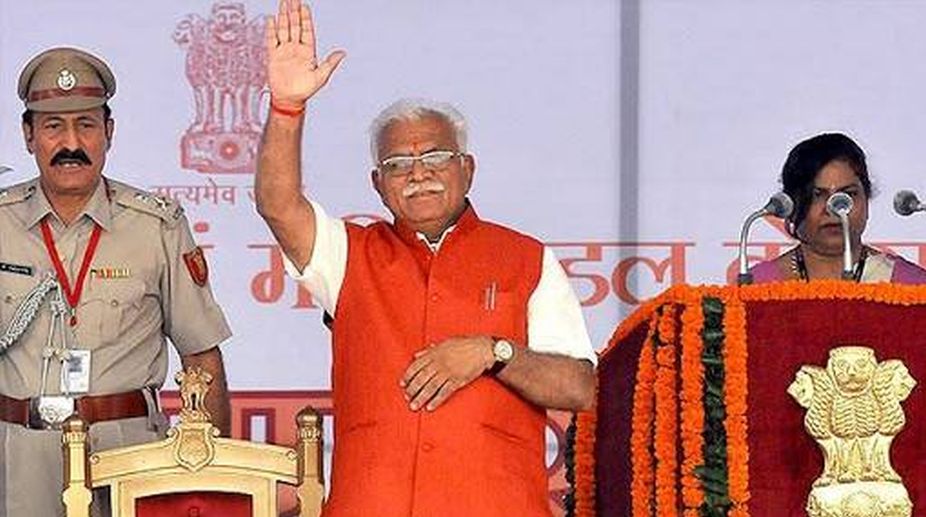Former RBI Governor appointed Principal Secretary-II to PM
Dr P K Mishra is the Principal Secretary-I to the Prime Minister.

Manohar Lal Khattar (PHOTO: Facebook)
Back in May 2015, when the Prime Minister Modi launched the nation-wide ‘Beti Bachao-Beti Padhao’ (BBBP) campaign in Haryana, it was an embarrassing moment for the state, rather than an event to cherish.
As many as 12 Haryana districts had lowest sex ratio in the country and even lowest three were also in the state. But less than two-and-half- years, Haryana appears to have turned it around with a missionary zeal thanks to a four-pronged strategy and active support of the Chief Minister (CM) Manohar Lal Khattar whose office is directly monitoring the implementation of the programme to “save and educate the girl child”.
Advertisement
Sample this : From 1966 to 2015 (49 years) the sex ratio at birth (SRB) – number of females per thousand males between 0-6 years – had never touched the 900 mark. After the launch of BBBP, the ratio touched the 900 mark for the first time in the month of December 2015, SRB remained 900 in 2016 and the average SRB is 909 till August, 2017.
Advertisement
“We hope to achieve the figure of 915 (SRB) by December 2017.
That way, we had a jump of 24 points in 2015-16, in 2016-17 we are expecting around 15 points jump. So over all, 39 to 40 point jump in two years is simply spectacular,” Additional Principal Secretary to the CM, Rakesh Gupta told The Statesman.
Gupta, who is in-charge of the BBBP campaign in CM’s office (CMO), said despite the deep-rooted mentality preferring a male child over female, a change of mindset is taking place.
“I can say for sure that young would-be mothers and their husbands are feeling empowered to resist the family pressure and say no to SD citing the law which can lead to prison if caught doing sex determination,” he said.
Besides the political as well as administrative support, the above turnaround has been achieved thanks to a four pronged strategy to curb female feticide — use of sting operations, decoy customers, co-ordination between concerned departments (health, education and women and child) and filing of First Information Reports (FIRs). While the first three have helped much, filing of FIRs against the accused has made a big impact.
“After an FIR is registered, the ultrasound machine (used for SD) gets sealed and the license of the concerned diagnostic center also gets suspended. Till the case remains, the machines remain sealed. If the accused gets relief from court, we immediately file an appeal to prevent them from getting functional again,” an official said.
Till 16 October, 506 FIRs have been filed against those indulging in SD since the launch of BBBP campaign in 2015. About 108 of these are inter-state including 50 in Uttar Pradesh, 28 in Delhi, 21 in Punjab and 10 in Rajasthan.
Gupta said easy availability of SD centers has been curbed but from the cases detected every month, it’s clear that SD has not come to an end.
“Criminal minded people including some doctors are still doing it. But if earlier there were 10 SD cases, now there are only one or two. But if similar pressure remains for next three-four years, this will come an end with the changing mentality of the society towards the girl child,” he added.
Advertisement